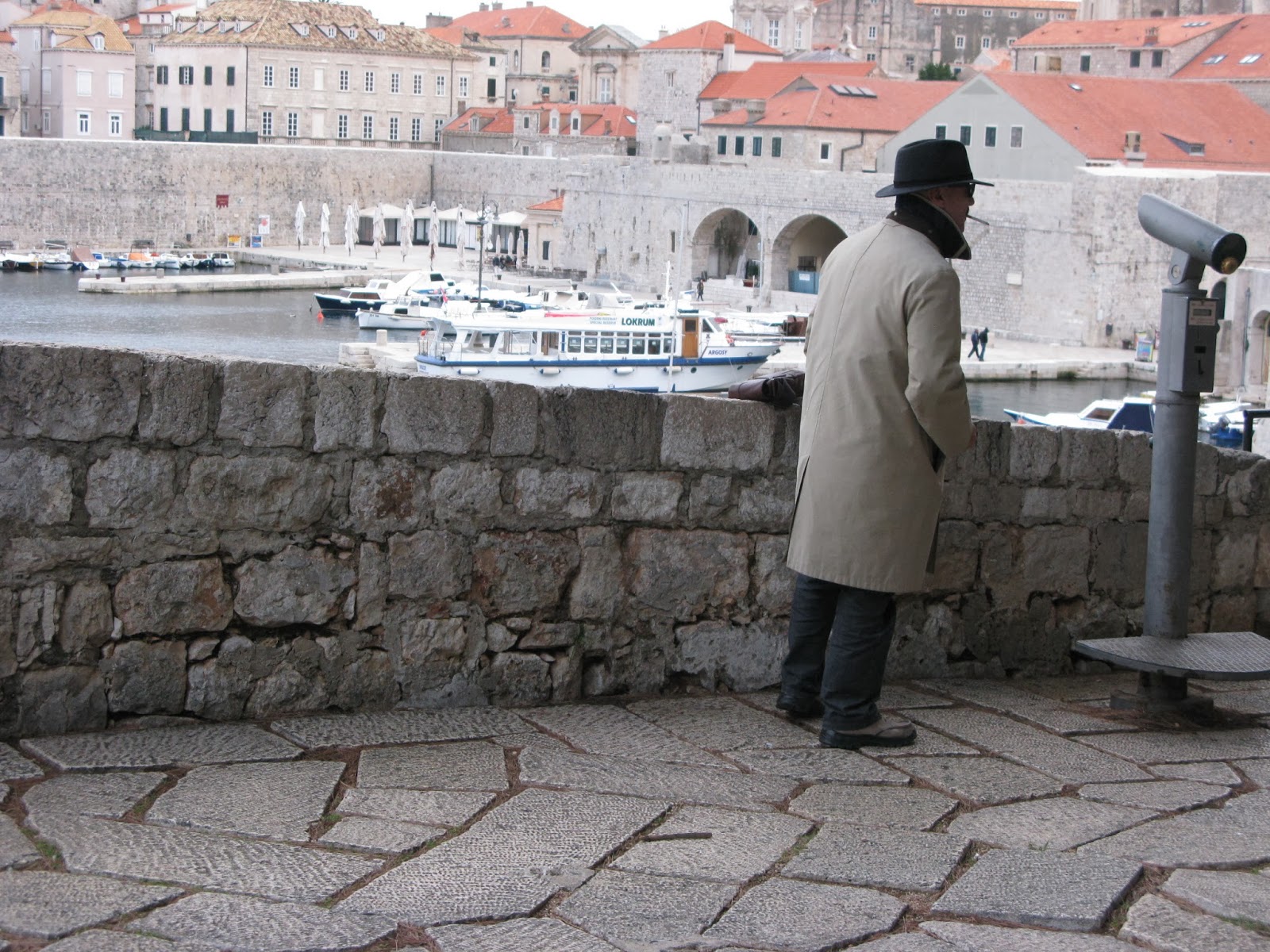 |
| Pearl of the Adriatic |
The magical ancient city of Dubrovnik was as wonderful as we had imagined. But our last stop on the trip south before we reached there was the small town Ston. It's a bit off the beaten track and not the most popular tourist destination but we were lucky enough to hear about it from a friendly Aussie, of all people!! We’d met this chap on our way south and he was full of enthusiasm for the place - and even more so for the up and coming final of the Rugby League World Cup between Australia and and NZ.
It is a small fortified town known for its medieval walls that circle the town, also for its salt works and now days oyster beds. We had noticed the pink sea beds, similar to the ones we used to see at Grassmere Salt works in Marlborough,NZ, a few km’s further north. Salt production has been a mainstay for this area since the Middle Ages and the works at Ston are amongst the oldest and best preserved in the Europe. The salt still harvested by hand.
But the real reason for our stop was this amazing wall which is five km’s long and connects the two small towns. Its the longest fortress system in Europe and the second largest in the world. They first started renovating the wall over fifty years ago and it has been a painstaking project as they have endeavoured to carry it out in exactly the same way as the walls were initially built by sculpting the stone.
So on with the walking shoes and over we go, a magnificent piece of work which is still ongoing, a great view of the area and the small town on the other side. We discovered a very friendly cafe owner who had more than enough time to sit and chat and reinforce the friendliness of the Croatians or though he was not quite as complementary of the Bosnian’s
 |
| The Old Town - Dubrovnik |
 |
| Evening closing in |
We had another great apartment in Dubrovnik although a bit more of a walk to the old city. The first night was wonderful, as it was dry and mild enough to stroll the shiny marble streets of the old walled city.
 |
| Love the vibrant orange roof |
 |
| The spy departs |
 |
| The spy turns his back |
We couldn't help ourselves when we saw this gentleman on the outskirts of the castle. He was your typical 1970's spy, as we approached he immediately turned his back on us, lifted his collar and snuck off into the darkness. Was he the genuine spy or was he just trying to avoid his wife?
The city is steeped in ancient history and glorious, Renaissance, Gothic and Baroque architecture of churches, monasteries and fountains. And although badly damaged by a major earthquake in 1667 it managed to rebuild and maintain much of the heritage. And then in 1991 during the war in Croatia, much to the horror of so many people, it was heavily bombed. But with worldwide support the damage was largely repaired quite quickly. Although as we wandered around the city you can still see the bullet marks and mortar damage in places.
The massive defensive city wall completely surrounding the Old Town is probably the most well known land mark. The beautifully maintained walls reach up to 25metres in height in some places and vary from 1.5metres thickness on the seaside right through to 6 metres on the landslide. An experience to wander around and view from.
The crystal clear waters look magical although not inviting at this time of the year - again we got to enjoy and wonderful display of lightning over the sea.
A few km’s down the coast we found Cavtat, a delightful little coastal town. Very quiet at this time of the year but a lovely walk around the wooded peninsula admiring the little bays. Along with a wide palm tree lined promenade the cafes were still serving great coffee as the older locals were out spending the day smoking and chatting as they minded their fishing rods.
 |
| Cavtat |
 |
| Enthusiastic Italian cyclists |
The border to Montenegro was only a few km’s further south so we crossed over and headed south towards the Bay of Kotor. We came across a delightful couple of Italians cyclists, both touring around Europe. Full of enthusiasm and stories from the adventures and thrilled to have some interested kiwi’s who wanted to listen.
Kotor was a great find, nestled at the head of the bay in a perfect spot you can understand why it has been fought over and ruled by various empires over the years. But all these influences on the architecture of the city have added to its charm.
 |
| Kotor |
As we drove closer, its the wall that's been built into the surrounding hills, protecting the city that first grabs your attention.
 |
| Entrance to the city |
The ancient walled city, which once through its main gate feels like a maze - perhaps planned that way for safety, is filled with treasures and a delight to wander through.
 |
| The two David's taking a breather on the way up |
The Italians cyclists had said we’d miss out on the best of Kotor if we didn’t climb the wall to the Fortress of St Ivan. So we scaled the 260metre climb along the walls getting the most magnificent view of the town and the scenery.
 |
| View as we headed up the wall |
The bay is the deepest natural fjord in the Mediterranean Sea with steep mountains that come almost to the waterfront. Reminding us of the spectacular South Island Fjordland.
 |
| A couple of nice guys off a cruise ship |










































